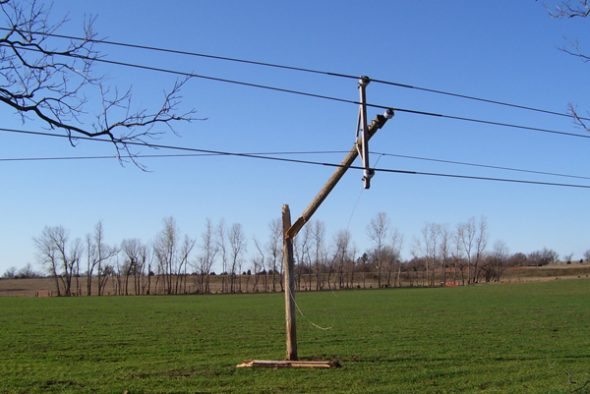Network operators are usually keen to underline the importance of the grid – to both them and to their consumers – but survey by Western Power of regional consumers has shown that an overwhelming majority are either very keen or are open to the idea of cutting the line altogether.
Only one fifth of those surveyed wanted to retain their poles-and-wire attachment to the centralised network.

The survey was undertaken by Western Power because it has identified 500 regional and remote customers where it could provide a stand-alone power station – renewable energy and battery storage – at around half the cost of the current network connection.
This is a particularly crucial issue for Western Power – and other networks in Australia – because of the massive cross subsidies involved in providing a service for remote consumers whose only connection may be at the end of extremely long and expensive “thin wires”.
That service is a legacy of the “connect everything” policy of the 1960s. But new technologies – specifically the plunging cost of solar and now battery storage – is offering new opportunities.
Western Power earlier this month revealed a new “modular approach” to the grid that would see them “snip the lines” for some consumers, create micro grids with thin connections to the others, and keep the remainder on the main network.
But it says is unable to do that because reguluation requires the network operator to maintain that physical connection.
Even though it could cost half as much to service with a stand alone power system, the networks are not allowed to pursue that avenue, unless they throw it open to competition and create a new business of their own.
There is also a dark area about whether a network operator can be a “generator” which is what it would be if it installed solar and storage on individual properties instead of just transmitting generation through a wire.
Western Power is now working on an application to change and clarify the rules, with the help of KPMG. It is arguing that it will need to make investment decisions on these 500 customers in the next couple of years, and while poles and wires was a good idea for the 1960s, it is not a good idea to replace like for like.
Jai Thomas, says that standalone power system are more reliable than long feeders, and reduce bush fire risk.
“These are small opportunities on our network, but the benefits can be reasonably large, not just for the customers but also for overall pricing and to limit cross subsidies.”
Thomas said that of the survey, 40 per cent were keen to cut the wires, and 40 per cent were moderately open to the idea of having poles and wires removed. Many farmers didn’t like having the physical assets on their property.
Only 20 per cent of customer interview were closed to the idea, often for historic family reasons (their parents or forebears helped build the lines).
This desire to leave the grid and remove poles and wires is nearly the opposite of what is assumed to be the case in metropolitan areas, where the networks are keen to underpin the importance of the grid.
However, a couple of reports led by CSIRO have suggested that if networks don’t get the pricing right, then up to one third of consumers could take matters into their own hands and leave the grid.
Disconnecting is not something that people expect,” Bloomberg New Energy Finance analyst Kobad Bhavnagri said on Thursday.
“But if you irratate them so much and make them pay the same amount even though they think they are using it only one third as much (because of their solar and storage), then you will get irrational responses.”










